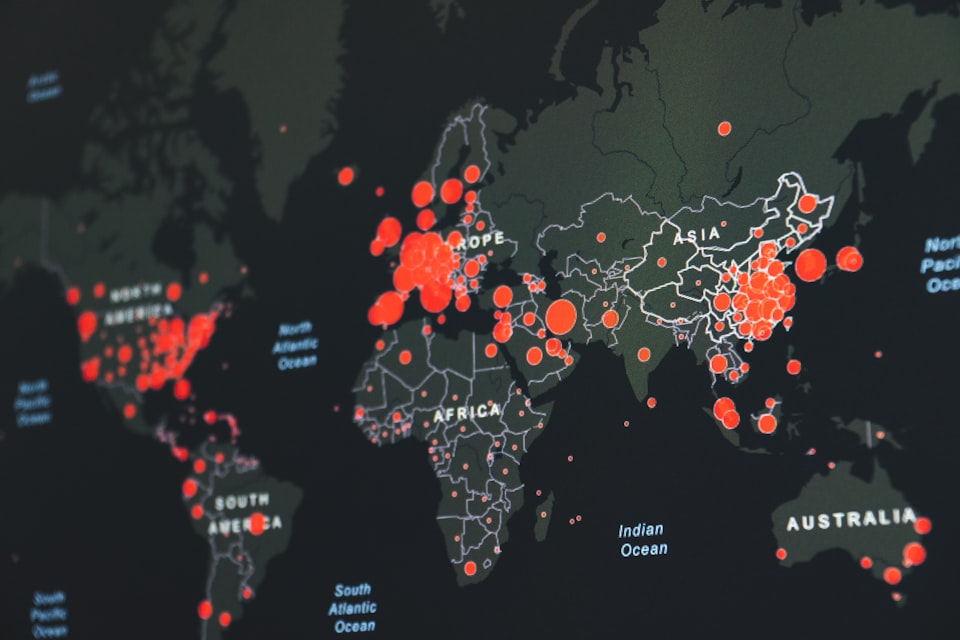Building After the Pandemic

The past few months have been quite an adventure for our civilization. Some things are starting to go back to normal, and yet others might never be the same again. Difficult times call for drastic changes. As our global social structure is upended by the novel coronavirus, we are adopting new tools and technologies faster than ever before, and also discarding a ton of aging practices that should have been abandoned long ago.
Recently, Marc Andreessen published an insightful and thoughtful post on our failure to prepare and respond the coronavirus pandemic. It highlighted many of the problems that have led to our current state of affairs.
Andreessen advocates for a return to building things that can take society into the future. Below, I list some more problems that led to our poor response to the pandemic, and give some suggestions on what we can build in the future.
Don’t Wait for a Crisis to Start Innovating.
As Andreessen mentions, we need to let go of “this smug complacency, this satisfaction with the status quo and the unwillingness to build.” Most of the technologies that we need to achieve a better tomorrow already exist, but “the problem is desire. We need to want these things,” he says. Currently, we don’t have the momentum to drive adoption of what we do build, and developing any new innovation is met with endless criticism from those that bask in the status quo.
So where can we start? First, empower the builders. Let them lead.
Compare Seattle and New York City — both home to diverse populations, major companies, and experts. But Seattle’s leaders let their scientists lead the coronavirus response, and New York’s did not. The outcomes could not be more polar. The entire state of Washington has just over 16,000 cases, less than half of which are in Seattle. New York State has over 333,000 cases — 183,000 in New York City alone. Washington has just over 900 deaths, while New York State has over 26,000.
It’s clearer now more than ever — if we want to build, then we need politicians and people to empower builders — scientists, engineers, biologists, entrepreneurs — that can lead with data, knowledge, experience, and the desire to make something meaningful, especially in times of crisis.
Finance
With a historic unemployment rate of 14.7% the U.S. government has been scrambling to distribute money to the millions suddenly out of work. But people are waiting for physical checks since there is no government mechanism to easily distribute money. Various archaic state unemployment systems have failed to scale up to the sudden spike in traffic. These systems literally had one job, but they have failed miserably. Some, like Florida, even failed purposefully.
Building a high-tech state system is not impossible — Estonia has pioneered it. But the U.S. has faced years of neglected government agencies, as well as fierce opposition to using technology in government and elsewhere, over fears of privacy, surveillance, and distrust of the government. That opposition should end the criticism and obstruction of progress, and instead learn from countries like Estonia to create a secure and functioning digital republic.
Cash and credit cards have been shown to harbor more germs than public restrooms, but both have been widespread. All of a sudden, people that criticized Big Tech now are realizing the benefits of contactless payments like Apple Pay and Google Pay. These technologies have been around for many years, so it is sad that it took a global pandemic for stores and governments to finally make the switch. Fintech companies like Square and Simple have been offering free mobile banking for years, which have been especially vital for the underbanked but it took this pandemic for free banking to become the standard.
Work
For years, urban planners and commuters alike have been pushing companies to shift to remote work policies. No one likes being stuck in traffic, causing pollution and frustration, and commuting severely restricts talented workers to certain cities areas where dense downtown offices are located. This concentration of workers not only causes the surge in housing prices in places like San Francisco, but it also creates a void of talent and economic growth in regions that don’t have large companies hiring thousands of people. Now that we have largely proven that remote work is not just possible, but also extremely practical, companies are beginning to adopt it in what is probably the biggest workplace trend of the last 50 years.
While desk jobs have been able to shift to remote work, manufacturing had to shut down operations or operate at reduced capacity due to stay-at-home orders for workers, or due to delays from up the supply chain. We need to build high-tech automated mega-factories that can easily run 24/7 and create base components for almost every product. But for that, companies need to vertically integrate and automate their manufacturing instead of outsourcing to cheap manual labor overseas. The building of these mega-factories (or gigafactories) would generate demand for thousands, even millions, of high-paying jobs in everything from AI and robotics to construction and logistics.
Education
Schools and universities have switched to online classes, which have virtually zero capacity limits. It’s time we scale this model up to exponentially increase the teaching capacity of the country’s top universities. The internet allowed us to create a platform of information — why not turn that into a platform for education?
The CollegeBoard announced that this year’s AP exams (and possibly even fall SAT exams) will be administered online and be just 45 minutes long. If short exams can prove to be effective in assessing a student’s knowledge, why not get rid of 3 hour long exams? Instead of making exams longer to cover the extra material students learn in a year, make short exams harder. This will push students to learn (and schools to teach) new things rather than just more of the same things.
Moving exams online also eliminates the overhead chaos of scheduling your exam, finding a testing center, paying for each exam (the biggest problem in education inequality), and leaked answers. Bring these examinations online and make them cheaper — no printing, shipping, scanning, and logistical costs would mean low-income students would not have to pay upwards of $80-100 for an exam.
Infrastructure
With the internet being such a vital part of our daily lives, one would expect it to be as easily available as electricity, especially in 2020. But many students have had a lot of trouble learning from home because some don’t have internet, and others have no computer. Where is the nationwide 5G? Why is there not a computer in every household? Why is not every child (and adult) proficient in basic computer usage? We can’t be the torchbearers of tomorrow if our curriculum and basic skillset does not keep up with today. We can easily equip our public libraries with devices and instructors to help teach computer skills to anyone who needs help — a kind of Genius Bar for beginners, especially in under-served neighborhoods.
An added side effect of the lockdown was the drastic improvement in air quality around the world doe to the drop in traffic. Imagine always being able to see mountains from downtown LA if all transportation was electric. Electric cars are better in every possible measurement compared to combustion engine cars, but most of the headlines regarding Tesla and other EVs we see in the news are negative and ill-informed. So far, Senator John Kasich is the only politician on record that drives an EV (a Tesla to be specific). Meanwhile the makers of the Green New Deal themselves slam Tesla for its innovations, but remain silent on the glaring safety and pollution issues of other automakers. Why have we been so slow to adopt clean and safe transportation? Local, state, and federal governments should prioritize building electric charging stations, politicians need to promote the technology, and news outlets need to explain the benefits to their audience.
Technology builds us. Embrace it, or step aside.
It’s painfully clear that we were not prepared for the coronavirus, but it has revealed the many cracks in our society that were previously hidden under bureaucracy, daily chaos, and plain ignorance. These cracks must be filled by building modern government systems, efficient workplaces, forward-thinking education platforms, and robust infrastructure.
The way to accomplish that is to build. Build with technology.
Silicon Valley and technologists around the world have been trying to reinvent every facet of our lives for years, but have met nothing but resistance every step of the way. You don’t need to look far to find a slew of startups and established companies working to tackle and fix deteriorating health systems. Some of the world’s best scientists and engineers are working to revolutionize education. And bioengineers are constantly inventing new farming methods to make our food production more resilient to the weather.
But why has progress been so slow? Why were we unprepared for the coronavirus despite having all of this technology around us? Why has it been a struggle to get from zero to one?
The problem is in the adoption, in embracing the things we build that make up our lives. The ill-informed media and out-of-date politicians work by reacting to the past, when they should instead be anticipating the future. If we keep thinking like yesterday, we will never build a better tomorrow. We’ve seen complaints and fears about EVs, online voting, solar panels, satellite internet, hyperloop travel, almost anything that can lead to a better future. Even Alphabet’s small experimental smart city project had to shut down after months of criticism from the public and politicians. Is it really in our best interest to oppose building smart futuristic cities?
Every exciting chance for technology to change our lives is met with resistance. Yet, in a time of turmoil and crisis, technology companies are blamed for not innovating enough.
As Andreessen says, “We need to demand more of our culture, of our society.”
It’s all or nothing — commit to innovation, commit to building, or step aside and let someone else do it.
Nothing less will do. The status quo will not do.
"You don’t make progress by standing on the sidelines whimpering and complaining. You make progress by implementing ideas."
~ Shirley Chisholm




